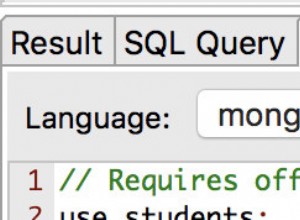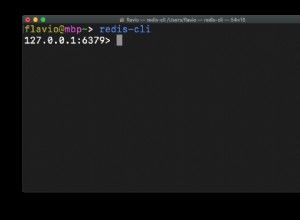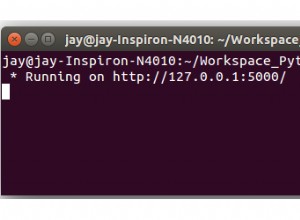Se você usar Stackechange.Redis, poderá usar os métodos List em sua API. Aqui está uma implementação ingênua de IList usando uma lista redis para armazenar os itens.
Espero que possa ajudá-lo a entender alguns dos métodos da API de lista:
public class RedisList<T> : IList<T>
{
private static ConnectionMultiplexer _cnn;
private string key;
public RedisList(string key)
{
this.key = key;
_cnn = ConnectionMultiplexer.Connect("localhost");
}
private IDatabase GetRedisDb()
{
return _cnn.GetDatabase();
}
private string Serialize(object obj)
{
return JsonConvert.SerializeObject(obj);
}
private T Deserialize<T>(string serialized)
{
return JsonConvert.DeserializeObject<T>(serialized);
}
public void Insert(int index, T item)
{
var db = GetRedisDb();
var before = db.ListGetByIndex(key, index);
db.ListInsertBefore(key, before, Serialize(item));
}
public void RemoveAt(int index)
{
var db = GetRedisDb();
var value = db.ListGetByIndex(key, index);
if (!value.IsNull)
{
db.ListRemove(key, value);
}
}
public T this[int index]
{
get
{
var value = GetRedisDb().ListGetByIndex(key, index);
return Deserialize<T>(value.ToString());
}
set
{
Insert(index, value);
}
}
public void Add(T item)
{
GetRedisDb().ListRightPush(key, Serialize(item));
}
public void Clear()
{
GetRedisDb().KeyDelete(key);
}
public bool Contains(T item)
{
for (int i = 0; i < Count; i++)
{
if (GetRedisDb().ListGetByIndex(key, i).ToString().Equals(Serialize(item)))
{
return true;
}
}
return false;
}
public void CopyTo(T[] array, int arrayIndex)
{
GetRedisDb().ListRange(key).CopyTo(array, arrayIndex);
}
public int IndexOf(T item)
{
for (int i = 0; i < Count; i++)
{
if (GetRedisDb().ListGetByIndex(key, i).ToString().Equals(Serialize(item)))
{
return i;
}
}
return -1;
}
public int Count
{
get { return (int)GetRedisDb().ListLength(key); }
}
public bool IsReadOnly
{
get { return false; }
}
public bool Remove(T item)
{
return GetRedisDb().ListRemove(key, Serialize(item)) > 0;
}
public IEnumerator<T> GetEnumerator()
{
for (int i = 0; i < this.Count; i++)
{
yield return Deserialize<T>(GetRedisDb().ListGetByIndex(key, i).ToString());
}
}
System.Collections.IEnumerator System.Collections.IEnumerable.GetEnumerator()
{
for (int i = 0; i < this.Count; i++)
{
yield return Deserialize<T>(GetRedisDb().ListGetByIndex(key, i).ToString());
}
}
}
Observe o uso de Newtonsoft.Json para a serialização. Você precisará dos seguintes pacotes nu-get:
Install-Package Newtonsoft.Json
Install-Package StackExchange.Redis
Depois de ler sua pergunta e comentários, como você deseja acessar os elementos por chave, acho que você está procurando por Redis Hashes, que são mapas compostos por campos associados a valores.
Assim você pode ter uma Chave Redis para um Hash contendo todos os seus Clientes, sendo cada um deles um Valor associado a um Campo. Você pode escolher o CustomerId como o campo, para que possa obter um cliente por seu id em O(1).
Acho que implementar o IDictionary é uma boa maneira de vê-lo funcionando. Portanto, uma classe RedisDictionary semelhante à RedisList, mas usando um Redis Hash poderia ser:
public class RedisDictionary<TKey, TValue> : IDictionary<TKey, TValue>
{
private static ConnectionMultiplexer _cnn;
private string _redisKey;
public RedisDictionary(string redisKey)
{
_redisKey = redisKey;
_cnn = ConnectionMultiplexer.Connect("localhost");
}
private IDatabase GetRedisDb()
{
return _cnn.GetDatabase();
}
private string Serialize(object obj)
{
return JsonConvert.SerializeObject(obj);
}
private T Deserialize<T>(string serialized)
{
return JsonConvert.DeserializeObject<T>(serialized);
}
public void Add(TKey key, TValue value)
{
GetRedisDb().HashSet(_redisKey, Serialize(key), Serialize(value));
}
public bool ContainsKey(TKey key)
{
return GetRedisDb().HashExists(_redisKey, Serialize(key));
}
public bool Remove(TKey key)
{
return GetRedisDb().HashDelete(_redisKey, Serialize(key));
}
public bool TryGetValue(TKey key, out TValue value)
{
var redisValue = GetRedisDb().HashGet(_redisKey, Serialize(key));
if (redisValue.IsNull)
{
value = default(TValue);
return false;
}
value = Deserialize<TValue>(redisValue.ToString());
return true;
}
public ICollection<TValue> Values
{
get { return new Collection<TValue>(GetRedisDb().HashValues(_redisKey).Select(h => Deserialize<TValue>(h.ToString())).ToList()); }
}
public ICollection<TKey> Keys
{
get { return new Collection<TKey>(GetRedisDb().HashKeys(_redisKey).Select(h => Deserialize<TKey>(h.ToString())).ToList()); }
}
public TValue this[TKey key]
{
get
{
var redisValue = GetRedisDb().HashGet(_redisKey, Serialize(key));
return redisValue.IsNull ? default(TValue) : Deserialize<TValue>(redisValue.ToString());
}
set
{
Add(key, value);
}
}
public void Add(KeyValuePair<TKey, TValue> item)
{
Add(item.Key, item.Value);
}
public void Clear()
{
GetRedisDb().KeyDelete(_redisKey);
}
public bool Contains(KeyValuePair<TKey, TValue> item)
{
return GetRedisDb().HashExists(_redisKey, Serialize(item.Key));
}
public void CopyTo(KeyValuePair<TKey, TValue>[] array, int arrayIndex)
{
GetRedisDb().HashGetAll(_redisKey).CopyTo(array, arrayIndex);
}
public int Count
{
get { return (int)GetRedisDb().HashLength(_redisKey); }
}
public bool IsReadOnly
{
get { return false; }
}
public bool Remove(KeyValuePair<TKey, TValue> item)
{
return Remove(item.Key);
}
public IEnumerator<KeyValuePair<TKey, TValue>> GetEnumerator()
{
var db = GetRedisDb();
foreach (var hashKey in db.HashKeys(_redisKey))
{
var redisValue = db.HashGet(_redisKey, hashKey);
yield return new KeyValuePair<TKey, TValue>(Deserialize<TKey>(hashKey.ToString()), Deserialize<TValue>(redisValue.ToString()));
}
}
System.Collections.IEnumerator System.Collections.IEnumerable.GetEnumerator()
{
yield return GetEnumerator();
}
public void AddMultiple(IEnumerable<KeyValuePair<TKey, TValue>> items)
{
GetRedisDb()
.HashSet(_redisKey, items.Select(i => new HashEntry(Serialize(i.Key), Serialize(i.Value))).ToArray());
}
}
E aqui estão alguns exemplos para usá-lo:
// Insert customers to the cache
var customers = new RedisDictionary<int, Customer>("customers");
customers.Add(100, new Customer() { Id = 100, Name = "John" });
customers.Add(200, new Customer() { Id = 200, Name = "Peter" });
// Or if you have a list of customers retrieved from DB:
IList<Customer> customerListFromDb;
customers.AddMultiple(customerListFromDb.ToDictionary(k => k.Id));
// Query a customer by its id
var customers = new RedisDictionary<int, Customer>("customers");
Customer customer100 = customers[100];
Atualização (outubro de 2015)
Uma melhor implementação dessas coleções pode ser encontrada na biblioteca CachingFramework.Redis.
Aqui está o código.




